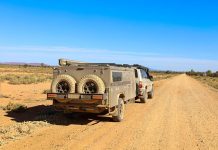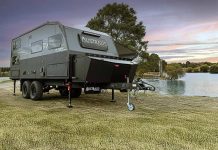Hands up if you’re guilty of ever ‘extinguishing’ your campfire with sand or soil before heading off to bed or perhaps to the next destination? You wouldn’t be the only one. In fact, there have been numerous reported cases of people and animals being severely burned after stepping in a fireplace had been smothered with soil, believing it to be cold.
In 2020, a nine-year-old boy was severely burned by a campfire north of Gympie, Qld, when he jumped into what we thought was a pile of sand. It was, however, smouldering ash and he suffered full-thickness burns to 12 per cent of his body.
The reality is, coals retain a great deal of heat long after the fire has reduced to embers, and a layer of dirt or sand is simply not enough to make a campfire safe again.
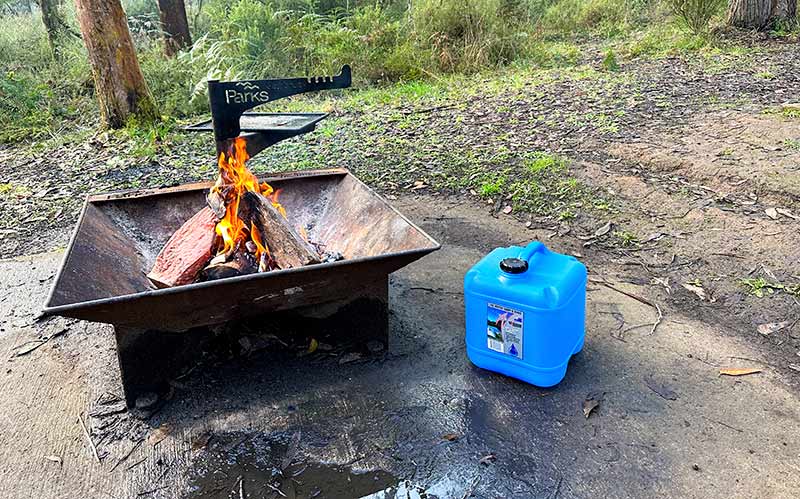
To drive the point home, and to hopefully save someone from a nasty burn, I lit two fires in separate fireplaces. Then, I extinguished one fire with about 7.5L of water, while the other was smothered with shovels of dirt. I then used a typical meat thermometer to take the temperature of each fireplace, and the difference was astonishing.
THE RESULTS
First-degree burns can occur around 48° Celsius, while second-degree burns can occur around 55°C. Third-degree burns, however, will occur around 60-65°C. Naturally, the severity of each burn will also depend on the length of exposure to the source of the heat. But the point remains: a fire that has been smothered in dirt, rather than extinguished properly with water, will retain enough heat to severely burn skin for hours.
Each fire was built to about the same size as the other, and each fairly represented the sort of fire a person might have going on a lazy afternoon with friends. With each fire having developed a decent amount of coals, I let them burn down. One fire then received six or seven shovel-loads of dirt, while the other was doused in water.
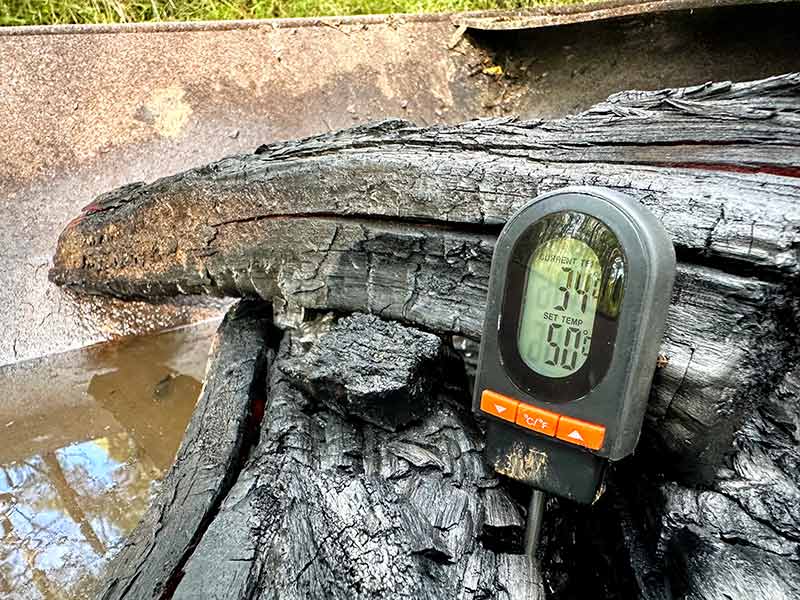
Using the thermometer, I immediately checked the temperature of each. The fire that I smothered with dirt registered a skin-melting 130°C… in fact, 130°C was the maximum temperature that my thermometer could read. I suspect a better, or more sensitive, thermometer would’ve registered a higher temperature. Regardless, it’s safe to say that skin exposed to 130°C for even the briefest of moments would do immense damage.
I waited an hour and re-tested. The temperature had reduced to about 75°C – still hot enough to cause serious burns. I will note, though, that because the fire had been covered with dirt, it was impossible to confirm if I was measuring with the thermometer directly against coals, where it would be theoretically the hottest. In any event, 75°C against skin would be a very bad day.
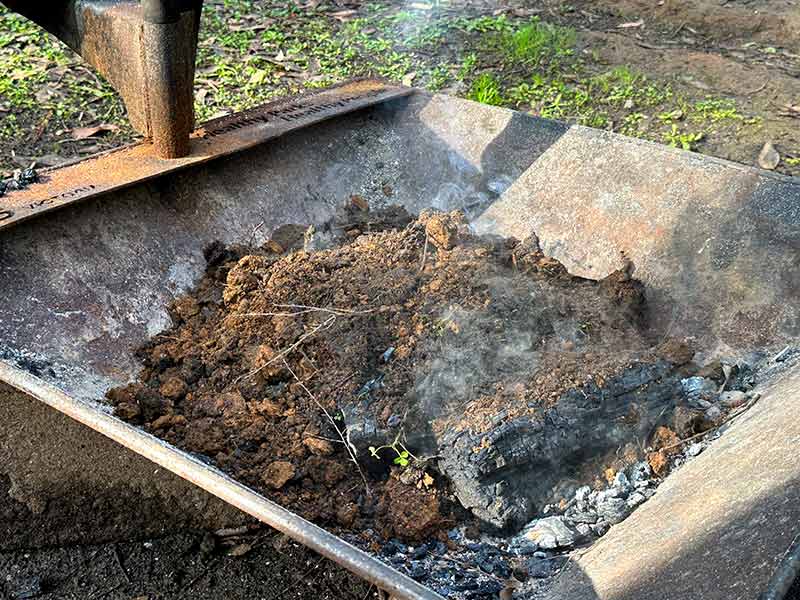
The fire that was extinguished with water, however, was safe to touch almost immediately. Once the smoke had cleared, I tested the temperature in a few different places. The first, with the thermometer sort of resting in the water pooled at the bottom, revealed a temperature of 38°C. I also poked the thermometer into a split inside a remaining piece of firewood, revealing a temperature of 60°C – hot enough to potentially cause a third-degree burn, though unlikely since it was inside the wood. The surface temperature of the wood registered below 30°C, safe enough to touch.
Some might quibble at the temperatures I recorded in this test, or the way I went about it. But assuming the thermometer was accurate – it was brand new and I had no reason to suspect it wasn’t accurate – the results speak for themselves. The only safe way to extinguish a fire is to use a sufficient quantity of water. Sand or soil might put out flames, but the coals will retain unsafe levels of heat for hours afterwards – a recipe for disaster.
CAMPFIRE TIPS
Unattended campfires, or campfires that haven’t been extinguished properly, can turn into bushfires. According to Victoria’s Country Fire Authority, a campfire can reignite if left to smoulder under soil.
 Before leaving your campsite, douse your fire in water and check that the ashes are cool to touch. If the ashes are cool to touch, it’s safe for you to leave. If the ashes are still warm, pour more water on the campfire until the ashes are cool.
Before leaving your campsite, douse your fire in water and check that the ashes are cool to touch. If the ashes are cool to touch, it’s safe for you to leave. If the ashes are still warm, pour more water on the campfire until the ashes are cool.
Remember, not all campsites, national parks, etc., allow campfires. Before lighting a fire, confirm that fires are allowed, and that it’s not a Total Fire Ban Day. If you’re not sure that fires are allowed, play it safe and don’t have one.
Never leave a campfire unattended. A responsible adult should stay within 50m of the fire at all times, always within line of sight, and have enough water on hand to extinguish the fire properly.
It should go without saying, but only ever use a purpose-built fireplace. If one is not available, the CFA recommends digging a trench at least 300mm deep.
Your campfire should not exceed one square metre, and an area of 3m above and around your fire must be clear of flammable material. Further, branches and logs placed on the fire must not be longer than 1m.


